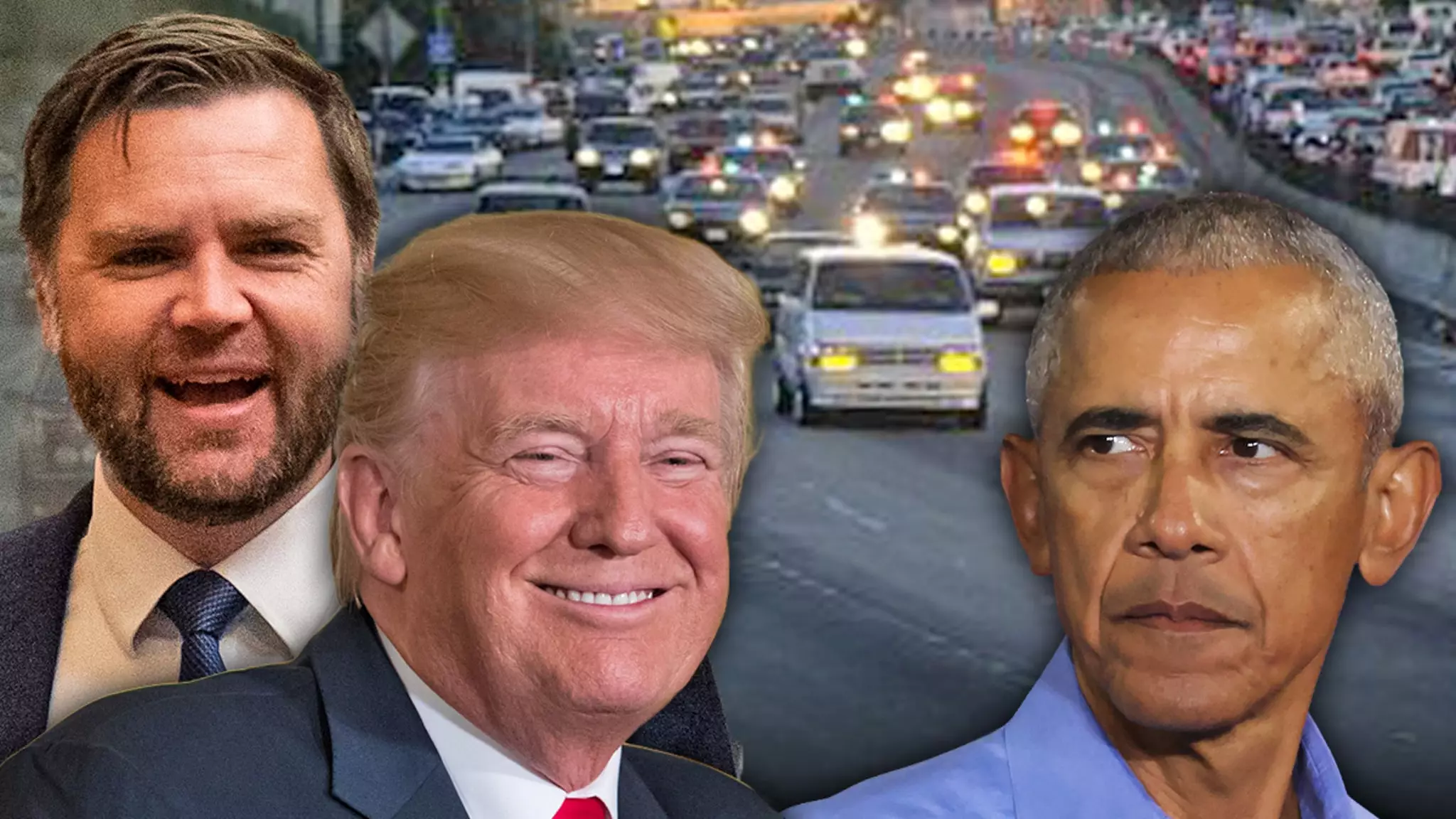In recent times, political figures have increasingly harnessed the power of media imagery to craft narratives that resonate with the public. The latest example involves President Donald Trump sharing a provocative meme that visualizes him in a high-octane chase scene from the 1994 O.J. Simpson case, with Obama and J.D. Vance portrayed as side characters. This digital collage, which digitally inserts Trump’s face into a police vehicle and Obama’s in the infamous Bronco, is not just a humorous meme but a deliberate attempt to frame political opponents within a narrative of pursuit and confrontation. The stark contrast in facial expressions—Trump’s smirking, confrontational stance versus Obama’s calm seriousness—serves to reinforce perceived differences in their political personas. Such imagery is more than mere satire; it becomes a potent tool to influence public perception, often skewing reality to serve partisan ends.
From Humor to Hyperbole: The Risks of Political Rhetoric
This meme exemplifies how political communication increasingly blurs the lines between satire, propaganda, and genuine discourse. While some may see it as harmless humor, its underlying message is provocative and polarizing. The meme appears to mock both Obama and Vance while simultaneously elevating Trump as a figure engaged in a high-stakes chase—an allegory for political struggle. However, this sort of exaggeration risks undermining constructive dialogue and reinforcing echo chambers, where facts are secondary to emotional reactions. When politicians adopt such dramatic visuals, they manipulate not only opinions but also emotions, creating a landscape where truth becomes secondary to spectacle.
Implications of Political Warfare in the Digital Age
The broader context involves ongoing accusations surrounding the Trump administration, notably the unfounded claims of collusion with Russia, which have been repeatedly challenged and discredited by investigations and bipartisan consensus. Using imagery associated with a notorious police chase links political narratives to sensational events, thus amplifying the message’s emotional impact. When leaders resort to such tactics, they leverage collective fears and biases, often diverting attention from substantive issues such as governance, policy, or judicial fairness. The current political climate is saturated with similar attempts to rewrite narratives through memes, social media posts, and other digital tactics—tools that, despite their brevity, wield immense influence over public discourse.
The Need for Critical Engagement in a Visual Age
Ultimately, this phenomenon underscores the importance of critical media literacy. Voters and observers must learn to discern between genuine political messages and manipulative imagery designed to evoke specific reactions. Political figures who rely on such tactics risk trivializing serious issues and fostering divisiveness. A healthy democracy depends on the ability of its citizens to analyze the motives behind such memes and to seek out factual, nuanced discussions amid a sea of sensational content. The current spectacle-driven politics, while engaging, threatens to overshadow meaningful debate—a trend that demands vigilance and a commitment to truth from all participants in the democratic process.

